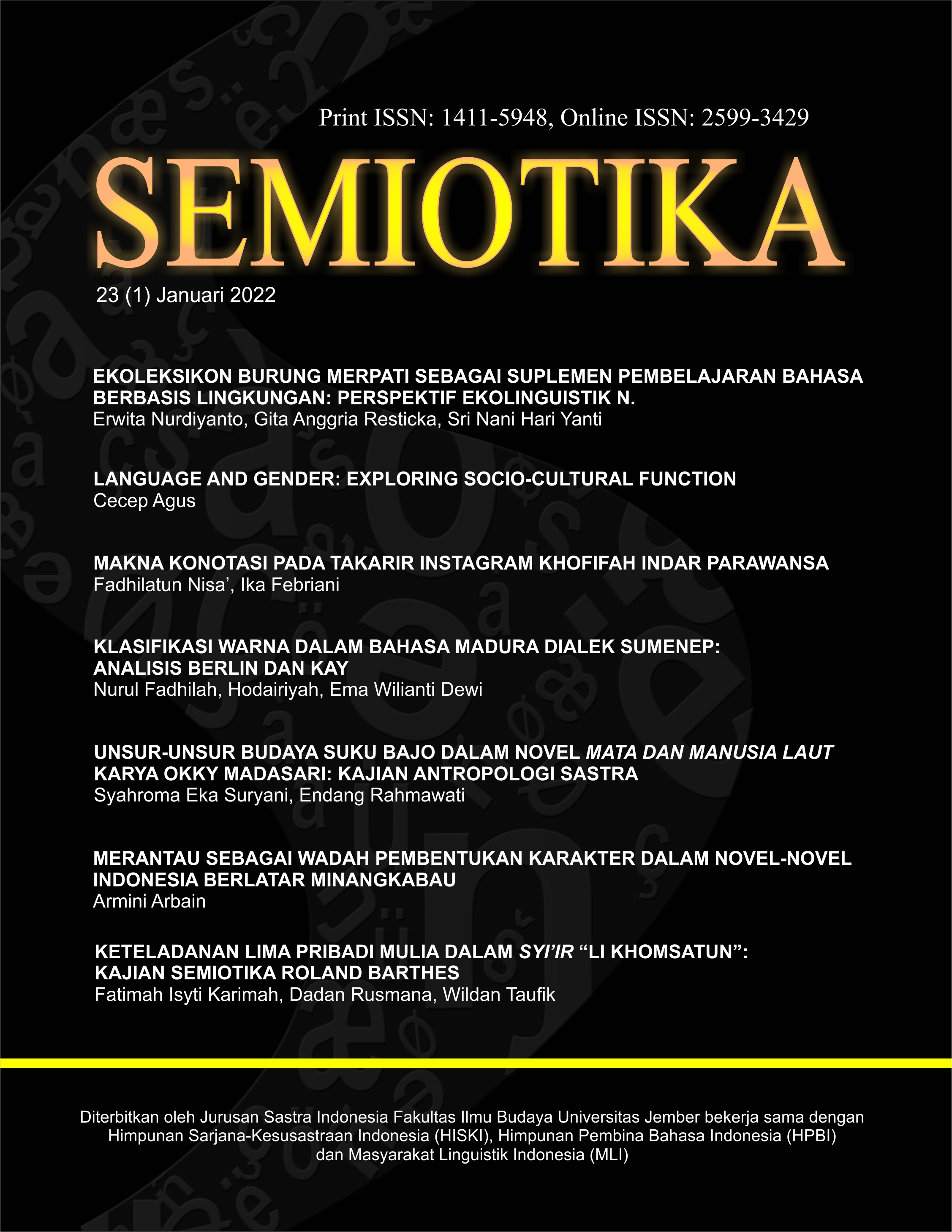EKOLEKSIKON BURUNG MERPATI SEBAGAI SUPLEMEN PEMBELAJARAN BAHASA BERBASIS LINGKUNGAN: PERSPEKTIF EKOLINGUISTIK
DOI:
https://doi.org/10.19184/semiotika.v23i1.24367Keywords:
Banyumas, ecolexicon, ecolinguistics, language learning, pigeonsAbstract
Ecolinguistics diversity becomes the richness of language, especially in lexicon, grammatical and metaphorical expressions that function to preserve their living environment. The purpose of the research is as a strategic effort to keep the local language based on the environment. This research is essential because the various terms used in the speech community of the Banyumas pigeon lover community can be used as an additional for environmental-based language learning. The method is a qualitative by using an ecolinguistic approach focused on interpretative perspective and based on the perspective of the subject of research in order to understand the meaning of the text (the social construct). The researcher constructs the meaning of the text through his involvement in interacting directly with nature, especially everything related to doves. This study identifies the persistence and displacement of the dove lexicon in the Banyumas community as well as the Banyumas community's perspective on the dove ecolexicon. The pigeon lexicon is a means of maintaining the language of the Banyumas people. Various activities of the Banyumas people's speech community related to the pigeon ecosystem can indirectly show the Banyumas people's perspective on their environment. It can be used as local-based language learning materials with ecolinguistic atmosphere.
Downloads
Downloads
Published
Issue
Section
License
SEMIOTIKA has CC-BY-SA or an equivalent license as the optimal license for the publication, distribution, use, and reuse of scholarly work. Authors who publish with this journal retain copyright and grant the journal right of first publication with the work simultaneously licensed under a Creative Commons Attribution-ShareAlike 4.0 International License that allows others to share the work with an acknowledgment of the work's authorship and initial publication in this journal.
Attribution-ShareAlike
CC BY-SA


